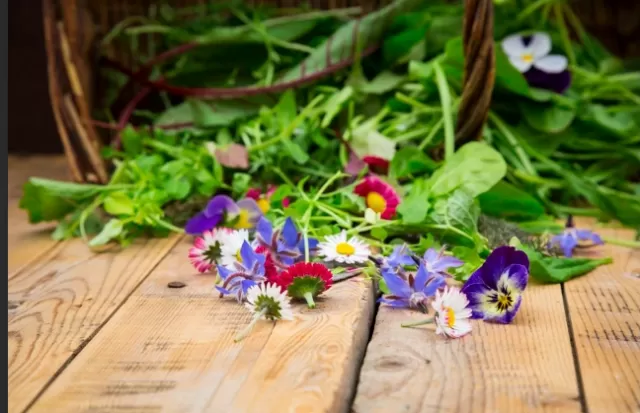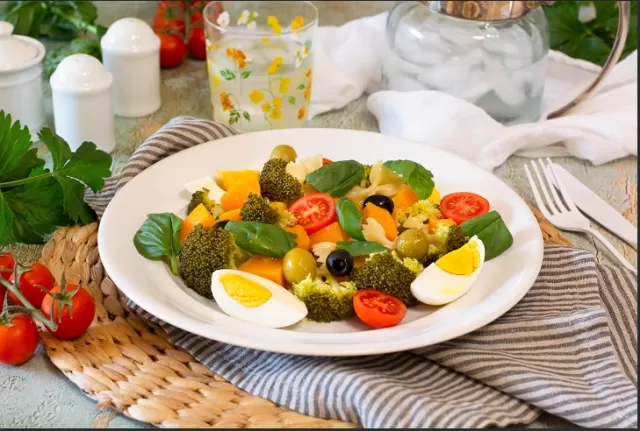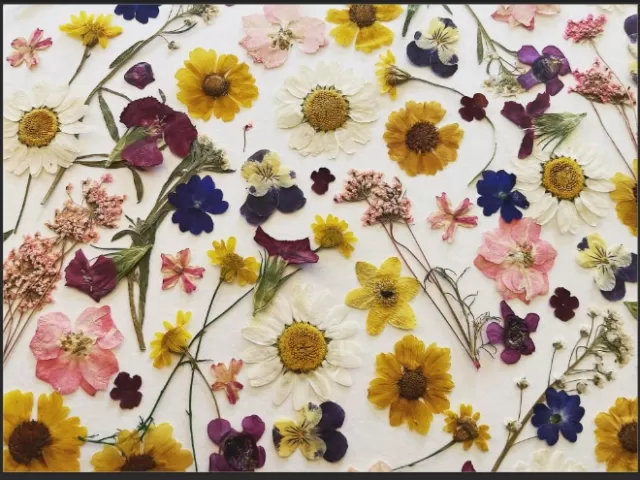An Illustrated Handbook on Edible Flowers and Creative Uses.If you’re on the hunt for a unique and creative way to expand your culinary skills, consider delving into the world of Edible Flowers. Much like other edible plants, these blooms come in a delightful array of flavors, adding a new dimension to baked goods, cocktails, soups, omelets, and more.
While the simplest introduction to using edible flowers is as a garnish, much like fresh herbs, it’s important to note that not all flowers are suitable for consumption, and there’s a certain art and science to harnessing their culinary potential.
It’s essential to exercise caution and knowledge when selecting and using these botanical gems, as many of them are better suited for a vase than your plate.
To unlock the versatile and enchanting world of edible flowers, we consulted with experts in the field who shared insights into the most popular varieties and how to incorporate them into a wide range of dishes. With their guidance, you can explore the culinary multitasking capabilities of these blooms and discover the countless ways they can enhance your gastronomic adventures.
Edible Flowers and Safety: A Cautionary Note

Exploring the world of edible flowers can be a fascinating journey into various flavors and textures, but it’s essential to exercise caution and knowledge before incorporating them into your culinary adventures.
Flowers offer a range of tastes, from sweet to peppery, but some can be hazardous when consumed.
Victoria Jabot, the owner of Ley Creek Farm, wisely points out that numerous flowers are not only inedible but potentially highly toxic.
Popular choices for bouquets, such as delphinium, tulip, narcissus, sweet pea, and foxglove, fall into this category. Therefore, it’s crucial to be well-informed about the flowers you intend to use in your dishes.
Furthermore, contamination poses a significant risk when it comes to edible flowers.
Potential sources of toxicity can include manure in the soil, pesticide sprays, the proximity of flowers to roads, or even direct contact with poisonous flowers within a bouquet.
While it’s common to assume that the petals of a flower are the edible part, it’s not always the case.
Cassie Winslow, the author of Floral Provisions and Floral Libations, emphasizes the importance of double-checking whether the flower you’re consuming is indeed edible and that you’re specifically eating the edible portion of the plant.
In conclusion, while experimenting with edible flowers can add a unique touch to your culinary creations, it’s crucial to prioritize safety and knowledge to ensure an enjoyable and risk-free experience.
Fresh vs. Dried Edible Flowers: A Culinary Perspective
When it comes to incorporating edible flowers into your culinary creations, you have the choice between fresh and dried options.
Each has its unique benefits and Considerations:.
Fresh Edible Flowers:.
Pristine Quality: Cultivating your own kitchen garden is the best way to ensure that your edible flowers are perfectly fresh and free from contaminants.
Seasonal Availability: Fresh edible flowers are typically available during the summer season, making them an ideal choice for dishes prepared during that time.
Vibrant Flavors and Aromas: Fresh flowers often boast more vibrant and pronounced flavors and aromas, enhancing the sensory experience of your dishes.
Dried Edible Flowers:.
Extended Shelf Life: Dried organic flowers have a longer shelf life compared to their fresh counterparts, allowing you to have them readily available for an extended period.
Convenient Pantry Staples: Dried flowers can be used to create pantry staples like rose salt, lavender sugar, and chamomile sugar, as suggested by Cassie Winslow.
These staples can be added to everyday dishes, providing a consistent source of floral essence and flavor.
Potent Flavor: Dried edible flowers can have a concentrated and potent flavor, which can be advantageous in certain recipes where a little goes a long way.
Whether you choose fresh or dried edible flowers depends on your culinary preferences and needs.
Cultivating your own garden is an excellent way to access pristine fresh flowers, but if you lack a green thumb or need a longer-lasting option, dried organic flowers can be a practical and potent choice.
Ultimately, both fresh and dried edible flowers can add a touch of elegance and flavor to your everyday cooking.
Edible Flowers: A Burst of Color and Flavor

Edible flowers offer not only a burst of vibrant color but also an exciting element of surprise to a variety of dishes.
With numerous flower varieties available, it’s essential to consider their flavor profiles and potential pairings when deciding which ones to use.
According to Victoria Jabot, who grows multipurpose edible flower crops, these blossoms not only enhance the visual appeal of a dish but also contribute distinct flavors.
Her farm provides spray-free blooms to a range of culinary professionals, including fine dining chefs, pastry chefs, and wedding caterers.
Here are some general characteristics of edible flowers:.
Peppery Varieties: Some edible flowers, cultivated specifically for their blossoms, offer a peppery flavor profile.
These can add a zesty kick to your dishes, making them suitable for salads, garnishes, or as a unique culinary accent.
Produce and Herb-Derived Flowers: Flowers that stem from produce and herb crops tend to take on the sweet and concentrated essence of their counterparts.
For example, if a flower originates from a basil plant, it might have a sweeter and more intense basil flavor. These flowers can be used to enhance and complement the flavors of dishes inspired by the corresponding herbs or vegetables.
When incorporating edible flowers into your recipes, it’s important to experiment and discover which varieties work best for your intended flavor profile and visual presentation.
The world of edible flowers offers a wide range of tastes and aromas, making it an exciting and creative realm for culinary exploration.
Popular Edible Flowers and Creative Culinary Applications

Edible flowers can be used in a variety of dishes, adding color, flavor, and a touch of elegance.
Here are some popular edible flowers and Creative Ways to use them in your culinary creations:.
Nasturtiums:.
Flavor: Peppery, slightly spicy.
Uses: Nasturtium flowers make a vibrant addition to salads, where their peppery flavor adds a pleasant bite.
They can also be used to garnish sandwiches, or stuffed with herbed cheese for a unique appetizer.
Calendula:.
Flavor: Mild and slightly tangy.
Uses: Calendula petals can brighten up salads, soups, and rice dishes.
They are also ideal for infusing into teas and creating colorful, edible decorations for cakes and desserts.
Pansies:.
Flavor: Mild, slightly grassy.
Uses: Pansies are perfect for adorning cakes, cupcakes, and other baked goods.
They can also be frozen into ice cubes to add a touch of elegance to beverages.
Lavender:.
Flavor: Floral and slightly sweet.
Uses: Lavender is excellent for flavoring baked goods, such as cookies and shortbread.
It can also be infused into syrups for cocktails or used to make lavender-infused honey.
Chive Blossoms:.
Flavor: Mild onion or garlic-like flavor.
Uses: Chive blossoms are a wonderful addition to salads, omelets, and as a garnish for creamy soups.
They offer a mild, savory onion or garlic note to your dishes.
Borage:.
Flavor: Light cucumber-like taste.
Uses: Borage flowers can be used to garnish beverages, like gin and tonics or iced tea.
They also look stunning in salads and can be candied to add a sweet touch to desserts.
Rose Petals:.
Flavor: Floral and sweet.
Uses: Rose petals are perfect for decorating cakes, but they can also be used in jams, jellies, and as an aromatic addition to Middle Eastern and Indian dishes.
Violets:.
Flavor: Sweet, perfumed flavor.
Uses: Violets are great for candying and using as cake decorations.
They can also be added to salads and desserts for a burst of color and a sweet, floral note.
Violas:.
Flavor: Mild and slightly sweet.
Uses: Violas are versatile and can be used in a similar way to pansies, making them a delightful addition to salads and baked goods.
Marigolds:.
Flavor: Mild and citrusy.
Uses: Marigolds can be used as a colorful addition to salads or to garnish soups.
They also make a striking addition to herbal teas.
These are just a few examples of popular edible flowers and how to use them in your culinary creations.
Remember to ensure that the flowers you use are free from pesticides and other contaminants, and always start with small quantitiesto acquaint yourself with their flavors and effects.
*The information is for reference only.